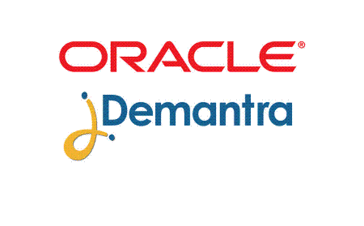Description

GMDH Streamline

Toolsgroup
Comprehensive Overview: GMDH Streamline vs Toolsgroup
GMDH Streamline and Toolsgroup are both software solutions designed to optimize supply chain management, focusing primarily on demand forecasting, inventory optimization, and overall supply chain planning. Here’s a detailed overview of each, including their primary functions, target markets, market share, user base, and key differentiating factors:
GMDH Streamline
a) Primary Functions and Target Markets
- Primary Functions:
- Demand Forecasting: Uses statistical models and machine learning to predict future product demand.
- Inventory Optimization: Balances inventory levels to meet demand without overstocking.
- Supply Planning: Manages supply chain operations to ensure timely product availability.
- Sales and Operations Planning (S&OP): Aligns sales projections with operations planning for cohesive strategic execution.
- Target Markets:
- Small to medium-sized enterprises (SMEs) looking for cost-effective solutions.
- Industries such as retail, distribution, manufacturing, and wholesale.
b) Market Share and User Base
- GMDH Streamline is a niche player, particularly popular among SMEs due to its affordability and ease of use.
- Its user base has been steadily growing as more companies seek efficient supply chain solutions that do not require large-scale implementation costs.
c) Key Differentiating Factors
- Cost-Effectiveness: Offers a competitive price point and quick implementation.
- User-Friendly Interface: Designed for ease of use, allowing even users with minimal technical expertise to manage complex forecasting and inventory tasks.
- Rapid Deployment: Typically quicker to implement than larger, more complex systems.
Toolsgroup
a) Primary Functions and Target Markets
- Primary Functions:
- Demand Forecasting and Planning: Advanced algorithms to accurately forecast demand.
- Inventory Optimization: Sophisticated tools to minimize inventory costs while maximizing service levels.
- Supply Chain Analytics: Provides actionable insights to streamline supply chain processes.
- S&OP and Integrated Business Planning: Ensures alignment of business plans with supply chain capabilities.
- Target Markets:
- Medium to large enterprises looking for robust, scalable solutions.
- Industries including consumer goods, industrial businesses, and automotive.
b) Market Share and User Base
- Toolsgroup holds a stronger position in the market, competing with other major supply chain software providers.
- It has a larger, more global user base, thanks to its advanced features and ability to handle complex supply chain processes.
c) Key Differentiating Factors
- Advanced Features: Offers a more comprehensive suite of tools for end-to-end supply chain management.
- Scalability: Capable of handling complex and large-scale operations, making it suitable for large enterprises.
- Integration Capabilities: Easily integrates with other enterprise systems such as ERP and CRM platforms, providing a seamless flow of information.
Comparison Summary
- Market Focus: GMDH Streamline is geared towards SMEs with its affordability and simplicity, while Toolsgroup caters to larger enterprises needing advanced, scalable solutions.
- Feature Set: Toolsgroup offers a broader and more powerful range of features, making it ideal for complex supply chain environments. GMDH Streamline, on the other hand, provides straightforward functionality that aligns well with the needs of smaller organizations.
- Implementation and Cost: GMDH Streamline is noted for its quick and cost-effective implementation, whereas Toolsgroup, with its advanced capabilities, may require larger investment and longer deployment times.
Both tools have their own strengths and fit different types of organizational needs, influenced largely by the complexity of the supply chain and the size of the business they serve.
Contact Info

Year founded :
2009
+1 888-688-6406
Not Available
United States
http://www.linkedin.com/company/gmdhstreamline

Year founded :
1993
+1 617-263-0080
Not Available
United States
http://www.linkedin.com/company/toolsgroup
Feature Similarity Breakdown: GMDH Streamline, Toolsgroup
GMDH Streamline and ToolsGroup are supply chain planning software solutions designed to help businesses optimize inventory, demand forecasting, and overall supply chain operations. Below is a comparative breakdown of their features:
a) Core Features in Common
-
Demand Forecasting:
- Both GMDH Streamline and ToolsGroup provide robust forecasting capabilities, using statistical models to predict future demand based on historical data.
-
Inventory Optimization:
- They both offer inventory optimization tools to help maintain optimal stock levels, reduce excess inventory, and avoid stockouts.
-
Supply Planning:
- Both platforms support supply planning, allowing companies to balance supply with expected demand, accounting for lead times and constraints.
-
Order Management:
- They provide features for managing purchase orders and replenishments efficiently.
-
Analytics and Reporting:
- Both products offer analytical tools and reporting functionalities to give insights into supply chain performance.
-
Integration Capabilities:
- They can be integrated with various ERP systems to streamline data flow and processes.
b) User Interface Comparison
-
GMDH Streamline:
- The GMDH Streamline interface is user-friendly, focusing on simplicity and ease of use. It employs a spreadsheet-like interface which may be appealing to users familiar with Excel, providing visual charts and dashboards that are intuitive to navigate.
-
ToolsGroup:
- ToolsGroup’s interface is generally more complex, with advanced visualization options that cater to power users and larger organizations with sophisticated supply chain needs. It features dashboards and an emphasis on workflow automation, which can be appealing for enterprise-level users but may have a steeper learning curve.
c) Unique Features
-
GMDH Streamline Unique Features:
-
Excel Integration:
- Streamline offers deep integration with Excel, allowing users who are accustomed to Excel to quickly adapt to its environment.
-
Cost Optimization:
- Streamline provides features specifically focused on cost optimization, helping businesses to reduce costs throughout the supply chain.
-
Flexibility and Ease of Use:
- It's particularly noted for its quick setup and ease of use, which makes it attractive to small and mid-sized businesses looking for quick deployment.
-
-
ToolsGroup Unique Features:
-
Machine Learning and AI:
- ToolsGroup incorporates advanced machine learning and AI for more accurate forecasting and anomaly detection, aimed at enterprises with large and complex datasets.
-
Probabilistic Modeling:
- The software uses probabilistic models to assess different demand scenarios, providing a more nuanced approach to demand variability.
-
S&OP Integration:
- It offers strong support for Sales and Operations Planning (S&OP), which facilitates cross-departmental collaboration and strategic decision-making.
-
Both tools are powerful in their own rights, but the choice would depend on the specific needs of the business, such as the complexity of supply chains, budget constraints, user expertise, and the size of the organization.
Features

Sales Analysis
Operations Optimization
Demand Forecasting
Inventory Management

Inventory Optimization
Supply Chain Analysis
Sales and Operations Planning (S&OP)
Demand Forecasting
Retail Planning
Best Fit Use Cases: GMDH Streamline, Toolsgroup
GMDH Streamline and Toolsgroup are both powerful tools for demand planning and supply chain management, but they cater to different use cases and business needs. Here's a breakdown of their best fit use cases:
GMDH Streamline
a) Best Fit Use Cases:
- Small to Medium-Sized Businesses: GMDH Streamline is particularly well-suited for small to medium-sized enterprises (SMEs) due to its affordability and ease of use. It provides robust forecasting and inventory management capabilities without requiring significant IT infrastructure.
- Businesses with Limited IT Resources: Companies with limited internal IT resources or those looking for a solution that does not require extensive customization or expert intervention might find Streamline appealing.
- Retail and Wholesale: Given its strong capabilities in managing inventory, forecasting demand, and optimizing stock levels, GMDH Streamline is ideal for retail and wholesale sectors where maintaining optimal inventory is critical.
- Companies Needing Quick Implementation: Businesses looking for a solution that can be implemented quickly and start delivering ROI without a long onboarding process may prefer GMDH Streamline.
Industry Verticals/Common Company Sizes:
- Vertically Focused on Retail, Wholesale, Distribution: These industries often require straightforward demand forecasting and inventory optimization.
- Typically Small to Mid-sized Companies: Streamline’s ease of use and feature set align well with companies that do not have the complex supply chain structures that larger enterprises might have.
Toolsgroup
b) Best Fit Use Cases:
- Large Enterprises with Complex Supply Chains: Toolsgroup is suitable for large organizations that have complex and diverse supply chain needs. It excels in scenarios where advanced analytics, machine learning, and sophisticated demand sensing capabilities are required.
- Industries with High Demand Volatility: Companies operating in industries with highly volatile demand patterns such as fashion, consumer goods, and electronics can benefit from Toolsgroup’s advanced forecasting and demand sensing features.
- Businesses Requiring Integrated Planning: Toolsgroup offers comprehensive features which support integrated planning across diverse functions such as demand, supply, and inventory. This is useful for organizations needing cohesive planning approaches.
- Global Organizations: Companies with a global footprint, needing to manage supply chains across different regions and facing varying market dynamics and supply chain challenges.
Industry Verticals/Common Company Sizes:
- Vertically Diverse (e.g., Manufacturing, Consumer Goods, Automotive): Toolsgroup caters to a wide range of industries where demand and supply network complexities are substantial.
- Typically Large Enterprises or Multinationals: These businesses have the resources and need for advanced features and can leverage Toolsgroup's sophisticated analytics capabilities.
In summary, GMDH Streamline is ideal for SMEs focused on cost-effective and easy-to-use demand forecasting and inventory optimization, primarily in retail and wholesale sectors. In contrast, Toolsgroup is suited for larger organizations that require more sophisticated, integrated planning solutions capable of handling complex and volatile supply chain scenarios across multiple industries.
Pricing

Pricing Not Available

Pricing Not Available
Metrics History
Metrics History
Comparing teamSize across companies
Conclusion & Final Verdict: GMDH Streamline vs Toolsgroup
When comparing GMDH Streamline and Toolsgroup, both products offer distinct features and benefits that cater to different business needs, making the decision largely dependent on specific requirements. A comprehensive analysis reveals the following insights:
Conclusion and Final Verdict
a) Best Overall Value: The best overall value between GMDH Streamline and Toolsgroup largely depends on the size of the business and its specific needs. For small to medium-sized enterprises (SMEs) looking for a cost-effective solution with essential forecasting and inventory planning capabilities, GMDH Streamline offers strong value. On the other hand, larger enterprises with complex supply chains may find Toolsgroup to deliver superior value due to its robust, comprehensive features that accommodate intricate logistics and advanced analytics.
b) Pros and Cons:
-
GMDH Streamline:
- Pros:
- Cost-effective, making it suitable for SMEs with limited budgets.
- User-friendly interface, ideal for businesses with limited IT resources.
- Offers essential forecasting and inventory planning features.
- Quick implementation and easy integration with existing systems.
- Cons:
- May lack some advanced features required for complex supply chain operations.
- Limited scalability for rapidly growing businesses with evolving needs.
- Pros:
-
Toolsgroup:
- Pros:
- Comprehensive supply chain planning capabilities, including demand sensing, inventory optimization, and automated planning.
- Highly scalable and customizable to meet the needs of large enterprises.
- Advanced analytics and machine learning capabilities for better demand forecasting.
- Strong customer support and training resources available.
- Cons:
- Higher cost, potentially not affordable for smaller businesses.
- Longer implementation time due to the complexity and customization options.
- Pros:
c) Recommendations:
-
For SMEs: Focus on GMDH Streamline, especially if budget constraints are significant and the primary requirement is straightforward demand forecasting and inventory management. Evaluate the potential for growth and consider how scalable the solution needs to be in the near future.
-
For Large Enterprises: Consider Toolsgroup, particularly if your operations involve complex supply chain networks and the need for advanced forecasting techniques. Ensure your organization has the resources and time for a potentially longer implementation process.
-
General Advice: Conduct a thorough needs assessment and feature comparison based on your specific operational challenges and goals. Engage with both solution providers to gain insights through demos and ask for case studies or testimonials from similar businesses. Factor in the total cost of ownership, including software licensing, implementation, training, and ongoing support, to arrive at the better long-term investment.
Add to compare
Add similar companies




